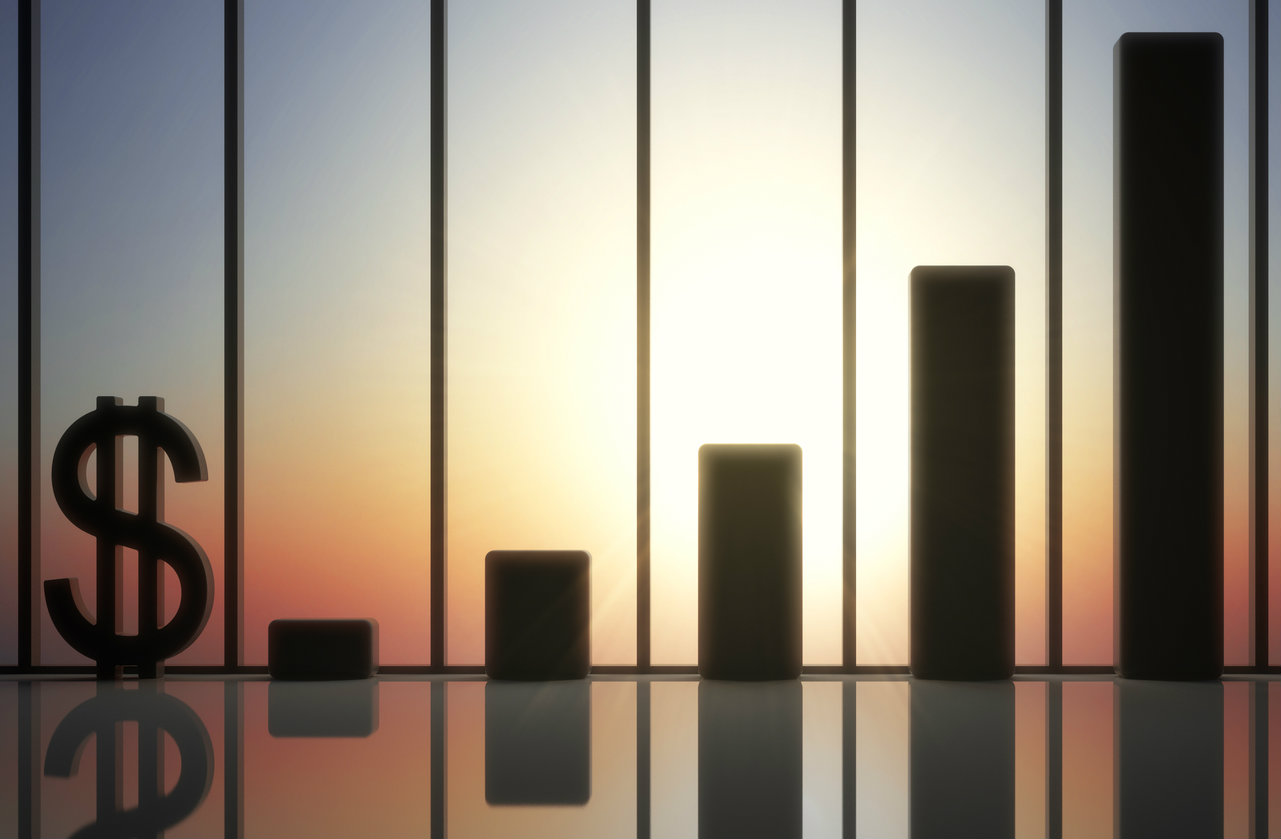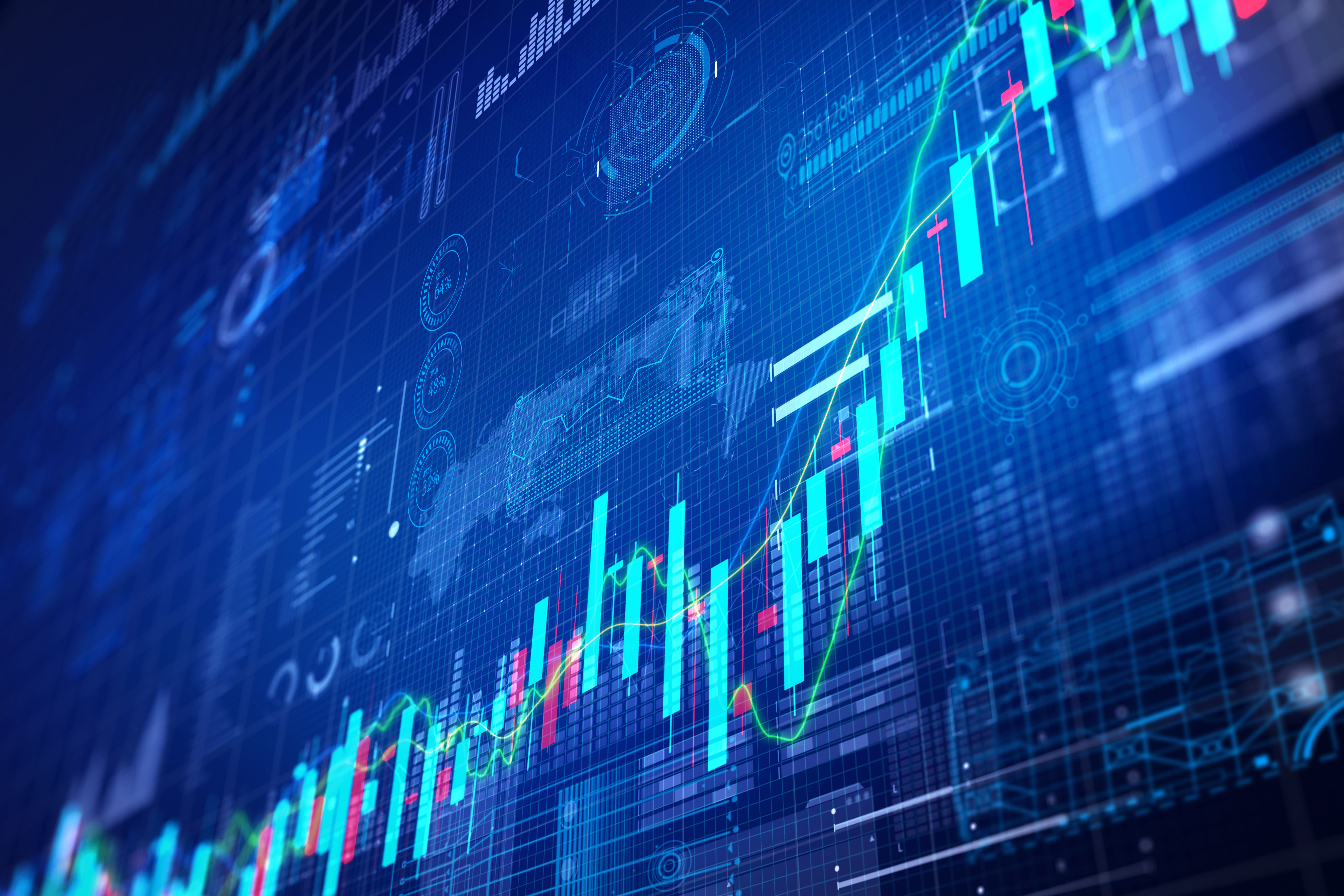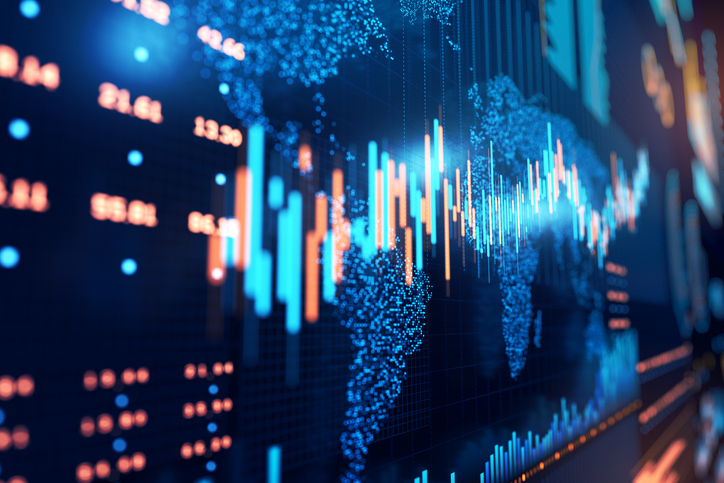8 Dow Dividend Stocks You Can Buy and Hold Forever
The 30 companies that make up the Dow Jones Industrial Average are household names.


The 30 companies that make up the Dow Jones Industrial Average are household names. Their sheer size and dominance of their respective fields make them not only well known but also good bets in bad markets. All 30 pay dividends, too, and that steady income can beef up total returns during markets both good and bad. Any stock carries risk, of course, but it's fair to say that as a group Dow stocks are among the more reliable names that investors can buy.
There are eight stocks in the Dow that have taken the concept of reliability to a whole new level when it comes to dividends. Known as Dividend Aristocrats, these stocks have seen their payouts to investors increase every year for at least 25 consecutive years. Some of these Dow component have hiked dividends for twice as long—50 years or more—and paid out dividends for over a century. Track records like these give investors an added layer of comfort no matter which direction the market turns.
Take a look at the eight Dow stocks that have raised dividends for 25 years in a row or more.
Data is as of February 16, 2017, unless otherwise indicated. Click on symbol links in each slide for current share prices and more.
(Companies are listed in order of market cap—share price times total shares outstanding—starting with the highest. Analysts’ ratings provided by Zacks Investment Research. The list of 50 Dividend Aristocrats is maintained by S&P Dow Jones Indices.)

Exxon Mobil
- Symbol: XOM
- Market cap: $338 billion
- Dividend yield: 3.7% (S&P 500: 2.0%)
- Analysts’ opinions: 2 strong buy, 2 buy, 10 hold, 0 underperform, 3 sell
A descendant of John D. Rockefeller's Standard Oil, today’s Exxon Mobil remains one of the world's largest oil companies and the single largest company among the 50 Dividend Aristocrats. As a dividend stalwart—Exxon has paid a dividend since 1882—it continued to hike its payout even as oil prices declined in recent years. Over the last 34 years, Exxon’s dividend payment has increased at an average annual rate of 6.4%.

Johnson & Johnson
- Symbol: JNJ
- Market cap: $322 billion
- Dividend yield: 2.7%
- Analysts’ opinions: 5 strong buy, 2 buy, 10 hold, 0 underperform, 1 sellJohnson & Johnson, founded in 1886 and public since 1944, operates in several different segments of the health care industry. In addition to pharmaceuticals, it makes over-the-counter consumer products such as Band-Aids and Listerine. It also manufactures medical devices used in surgery. Like many health care companies, a radical change in Obamacare under the Trump administration could hurt business, so it's comforting that J&J has raised its dividend every year for 54 straight years.

Procter & Gamble
- Symbol: PG
- Market cap: $233 billion
- Dividend yield: 2.9%
- Analysts’ opinions: 6 strong buy, 2 buy, 7 hold, 0 underperform, 1 sellWith major brands such as Tide detergent, Pampers diapers and Gillette razors, Procter & Gamble is among the world's largest consumer products companies. Although the economy ebbs and flows, demand for products such as toilet paper, toothpaste and soap tends to remain stable. That hardly makes the company recession-proof, but it has proven to be a reliable dividend payer for over a century. P&G has paid shareholders a dividend since 1891 and has raised its dividend annually for 60 years in a row.

Chevron
- Symbol: CVX
- Market cap: $208 billion
- Dividend yield: 3.9%
- Analysts’ opinions: 10 strong buy, 2 buy, 4 hold, 0 underperform, 0 sellChevron, like its competitors, was hurt when oil prices started to tumble. The company has been forced to slash spending, but—reassuringly—it hasn’t slashed its dividend. The outlook for oil remains uncertain, with Kiplinger forecasting that prices will stay below $60 a barrel at least through the spring. But with 31 consecutive years of dividend growth under its belt, Chevron's track record instills confidence that the payouts will continue.

Walmart Stores
- Symbol: WMT
- Market cap: $212 billion
- Dividend yield: 2.9%
- Analysts’ opinions: 8 strong buy, 0 buy, 12 hold, 0 underperform, 3 sellThe world's largest retailer isn't conceding the race to Amazon.com, even as the online juggernaut claims an ever-larger piece of the retail pie. Walmart went on the offensive in 2016 by spending more than $3 billion to acquire Jet.com, an up-and-coming online retailer. More recently, Walmart took another jab at Amazon by unveiling free two-day shipping on more than 2 million items—no membership fee required. (Amazon charges $99 a year for a Prime membership, which includes free two-day shipping among other perks.) Walmart has increased its dividend every year since 1974.

Coca-Cola
- Symbol: KO
- Market cap: $178 billion
- Dividend yield: 3.4%
- Analysts’ opinions: 2 strong buy, 0 buy, 10 hold, 0 underperform, 1 sellCoca-Cola has long been known for quenching consumers’ thirst, but it’s equally effective at quenching investors’ thirst for income. The company has paid a quarterly dividend since 1920, and that dividend has increased annually for the past 54 years. With the U.S. market for carbonated beverages on the decline for more than a decade, according to market research, Coca-Cola has responded by adding bottled water, fruit juices and teas to its product lineup to keep the cash flowing.

3M
- Symbol: MMM
- Market cap: $109 billion
- Dividend yield: 2.8%
- Analysts’ opinions: 3 strong buy, 0 buy, 7 hold, 0 underperform, 2 sellIndustrial conglomerate 3M, which makes everything from adhesives to electric circuits, has been hurt by the renewed strength of the U.S. currency. Since the company sells its products worldwide, a strong dollar makes 3M’s goods more expensive to overseas buyers and reduces revenue when foreign sales made in local currencies are converted into greenbacks. Foreign-currency translation reduced sales by 1.2% in 2016. Still, the company has weathered tough times before without sacrificing a dividend that dates back a century and has increased annually for 58 consecutive years.

McDonald's
- Symbol: MCD
- Market cap: $106 billion
- Dividend yield: 2.9%
- Analysts’ opinions: 8 strong buy, 0 buy, 14 hold, 0 underperform, 1 sellThe world's largest hamburger chain also happens to be a dividend stalwart. Changing consumer tastes will always be a risk, but McDonald's dividend dates back to 1976 and has gone up every year since. Fast-food competition remains intense, but in 2017 the company is looking to hold on to the momentum it gained from the introduction of all-day breakfast in the U.S.
Profit and prosper with the best of Kiplinger's advice on investing, taxes, retirement, personal finance and much more. Delivered daily. Enter your email in the box and click Sign Me Up.

Dan Burrows is Kiplinger's senior investing writer, having joined the publication full time in 2016.
A long-time financial journalist, Dan is a veteran of MarketWatch, CBS MoneyWatch, SmartMoney, InvestorPlace, DailyFinance and other tier 1 national publications. He has written for The Wall Street Journal, Bloomberg and Consumer Reports and his stories have appeared in the New York Daily News, the San Jose Mercury News and Investor's Business Daily, among many other outlets. As a senior writer at AOL's DailyFinance, Dan reported market news from the floor of the New York Stock Exchange.
Once upon a time – before his days as a financial reporter and assistant financial editor at legendary fashion trade paper Women's Wear Daily – Dan worked for Spy magazine, scribbled away at Time Inc. and contributed to Maxim magazine back when lad mags were a thing. He's also written for Esquire magazine's Dubious Achievements Awards.
In his current role at Kiplinger, Dan writes about markets and macroeconomics.
Dan holds a bachelor's degree from Oberlin College and a master's degree from Columbia University.
Disclosure: Dan does not trade individual stocks or securities. He is eternally long the U.S equity market, primarily through tax-advantaged accounts.
-
 Dow Hits a Record High After December Jobs Report: Stock Market Today
Dow Hits a Record High After December Jobs Report: Stock Market TodayThe S&P 500 also closed the week at its highest level on record, thanks to strong gains for Intel and Vistra.
-
 Is Home Insurance Tax Deductible?
Is Home Insurance Tax Deductible?With home insurance rates on the rise, you might be hoping to at least claim the cost as a tax deduction. Here's what you need to know ahead of tax season.
-
 The December Jobs Report Is Out. Here's What It Means for the Next Fed Meeting
The December Jobs Report Is Out. Here's What It Means for the Next Fed MeetingThe December jobs report signaled a sluggish labor market, but it's not weak enough for the Fed to cut rates later this month.
-
 Dow Hits a Record High After December Jobs Report: Stock Market Today
Dow Hits a Record High After December Jobs Report: Stock Market TodayThe S&P 500 also closed the week at its highest level on record, thanks to strong gains for Intel and Vistra.
-
 Nasdaq Takes a Hit as the Tech Trade Falters: Stock Market Today
Nasdaq Takes a Hit as the Tech Trade Falters: Stock Market TodayThe Dow Jones Industrial Average outperformed on strength in cyclical stocks.
-
 Dow Hits New High Then Falls 466 Points: Stock Market Today
Dow Hits New High Then Falls 466 Points: Stock Market TodayThe Nasdaq Composite, with a little help from tech's friends, rises to within 300 points of its own new all-time high.
-
 Dow, S&P 500 Rise to New Closing Highs: Stock Market Today
Dow, S&P 500 Rise to New Closing Highs: Stock Market TodayWill President Donald Trump match his Monroe Doctrine gambit with a new Marshall Plan for Venezuela?
-
 States That Tax Social Security Benefits in 2026
States That Tax Social Security Benefits in 2026Retirement Tax Not all retirees who live in states that tax Social Security benefits have to pay state income taxes. Will your benefits be taxed?
-
 'Donroe Doctrine' Pumps Dow 594 Points: Stock Market Today
'Donroe Doctrine' Pumps Dow 594 Points: Stock Market TodayThe S&P 500 rallied but failed to turn the "Santa Claus Rally" indicator positive for 2026.
-
 Stocks Struggle for Gains to Start 2026: Stock Market Today
Stocks Struggle for Gains to Start 2026: Stock Market TodayIt's not quite the end of the world as we know it, but Warren Buffett is no longer the CEO of Berkshire Hathaway.
-
 Stocks End Volatile Year on a Down Note: Stock Market Today
Stocks End Volatile Year on a Down Note: Stock Market TodayAfter nearing bear-market territory in the spring, the main market indexes closed out the year with impressive gains.
